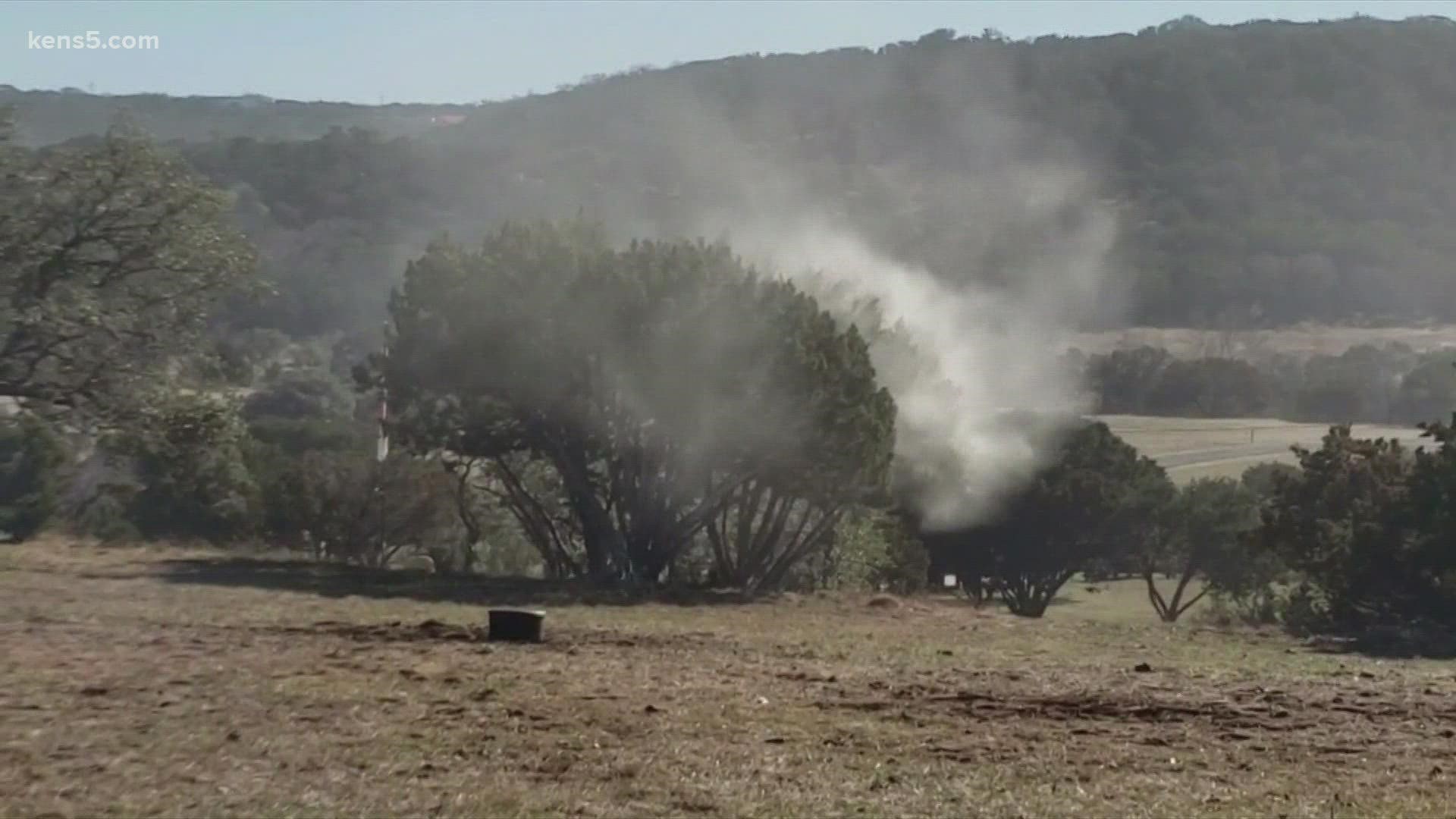SAN ANTONIO — If your allergies are acting up, you're not alone.
It's cedar fever season and it's happening in the middle of a pandemic.
KENS 5 spoke with a woodland ecologist to learn how to tell the difference between COVID-19, the flu and seasonal allergies.
Experts say the answer lies in your tissue after you blow your nose.
"Just within the last week, I know there have been quite a few days where it was hazy," said Karl Flocke, a Woodland Ecologist with Texas A&M Forest Service.
Experts are calling it a bad year for cedar pollen.
"In December through early February, that's when all the Ashe Juniper trees are releasing their pollen into the air, it gets blown around, we inhale it and it causes that allergic reaction," said Flocke. "It really does seem to be a pretty bad season for allergy sufferers."
Cedar fever is an allergic reaction to high levels of pollen in the air, which could be mistaken for a cold, the flu or even COVID-19.
With cedar fever, you'll experience general allergic reaction symptoms: Itchy/watery eyes, a runny nose, sneezing, coughing, sore throat and possibly a headache.
There are two ways to check if you have cedar fever or something more serious.
First, take your temperature. If it's over 100 degrees, get checked by a medical professional because fever is a symptom of both COVID-19 and the flu.
"With allergies, very seldom does it cause a very high fever," Flocke explained.
Second, take a close look at your tissue after you blow your nose.
"Generally with allergic reactions, your mucus is very often clear and runny whereas with more serious infections it might be thicker and discolored," said Flocke.
Clear mucus, Flocke says, is the one symptom that should steer you clear.
"If you're experiencing anything different or weird that you don't know about, it's best to be on the side of caution especially with all the other things going around right now," he added.
If you have symptoms of cedar fever, Flocke says you can treat it with over-the-counter nasal sprays or antihistamines.
Another step you can take is close any windows in your home and make sure you're running your AC or heater with filters in it. Doing so can help keep the pollen outside the house and away from you.
CEDAR FEVER SYMPTOMS
- Fatigue
- Sore throat
- Runny Nose
- Partial loss of smell
- Watery eyes
- Cough
COVID SYMPTOMS
- Fever or chills
- Cough
- Shortness of breath or difficulty breathing
- Fatigue
- Muscle or body aches
- Headache
- New loss of taste or smell
- Sore throat
- Congestion or runny nose
- Nausea or vomiting
- Diarrhea
FLU SYMPTOMS
- Fever or feeling feverish/chills
- Cough
- Sore throat
- Runny or stuffy nose
- Muscle or body aches
- Headache
- Fatigue
- Vomiting and diarrhea (more common in children)

